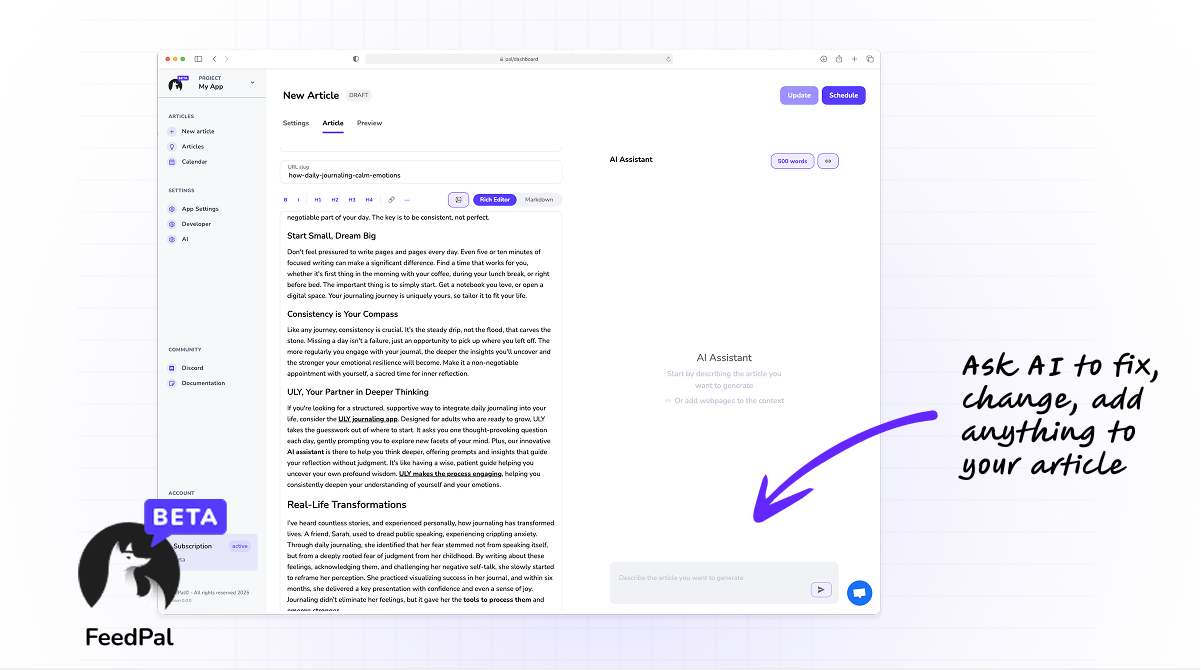Have you ever considered that some of your most valuable content might already exist on your blog?
Many content creators focus solely on producing new articles, overlooking a powerful strategy, optimizing their existing, older blog posts.
This approach is not just about making minor tweaks, it is about giving your content a second life, significantly improving its search engine optimization, SEO, performance, and drawing in more organic traffic.
Think of your old blog posts as potential high traffic source.
A systematic approach to refreshing these articles can yield substantial benefits
This process involves a few key, actionable steps that can transform underperforming content into top performers.
The Foundation: Conducting a Thorough Content Audit
Before you dive into edits, you need to know what you are working with.
Start by making a content audit of all your previous articles.
Why is this crucial? Because it helps you identify which pieces have the most potential for improvement and which might be beyond saving.

To conduct an effective content audit, begin by gathering data. Use tools like Google Analytics, Google Search Console, and Ahrefs or Semrush.
Look at metrics such as organic traffic, bounce rate, average time on page, backlinks, and keyword rankings.
Categorize your content. You might find articles that are:
- High-performing but outdated: These are gold. They already attract traffic but contain old information.
- Low-performing with high potential: Articles that address relevant topics but do not rank well. They need significant overhauls.
- Outdated and low-performing: Consider redirecting or deleting these if they offer no value.
For example, if you have a blog post from 2018 titled “Top 5 Social Media Trends,” it likely receives some traffic but needs immediate updates to remain relevant. An audit helps you pinpoint exactly which articles fall into this category, saving you time and effort.
Breathing New Life: Updating Outdated Information
Once your audit is complete, the next step is to update any outdated information. This is perhaps the most direct way to boost your content’s freshness and credibility. Old statistics, defunct product names, or expired trends can quickly erode a reader’s trust and signal to search engines that your content is not current.
Why does updating matter beyond trust?
Search engines prioritize fresh, accurate content. An article with the latest information is more likely to rank higher. Consider an article about software features, if the screenshots are from an old interface, or if pricing models have changed, the content quickly becomes irrelevant. This is a key aspect of creating evergreen content.
Here are practical ways to update your content:
- Replace old statistics: Find the latest industry reports and data. For example, if you cited a 2015 statistic on e-commerce growth, find the equivalent from 2023 or 2024.
- Update dates: Change mentions of years, seasons, or specific event dates. Sometimes a simple update in the title, like changing “2022 Guide” to “2025 Guide,” can make a big difference.
- Refresh examples and case studies: Ensure your examples are current and reflective of today’s market.
- Check and update broken links: Broken external links hurt user experience and SEO.
Make sure your facts are current. This keeps your content authoritative and valuable to readers.
Expanding Your Reach: Integrating New Keywords
Your original article might have targeted specific keywords, but search trends evolve. Integrating new and relevant keywords can significantly expand your content’s reach and capture a wider audience. This is not about keyword stuffing, it is about natural inclusion that enhances topical depth.
Why new keywords?
Because people search differently over time. New phrases emerge, and long-tail keywords offer opportunities to capture niche traffic. Imagine your initial article on “smartphone photography tips” now needs to account for newer terms like “AI photo editing apps” or “computational photography basics.”
Begin with fresh keyword research.
- Analyze competitor content: See what keywords your competitors are ranking for with similar topics.
- Explore related searches: Use tools to find LSI, latent semantic indexing, keywords and phrases related to your core topic.
- Look at “People Also Ask” sections: Google’s own suggestions are a goldmine for new subtopics and questions people are asking.
Once you have a list, naturally weave these keywords into your article. Update headings, add new paragraphs that address these terms, and ensure they flow seamlessly with your existing content. This strategic expansion can significantly improve your article’s visibility for a broader set of queries.
Reader-Friendly First: Readability and User Experience
Even the most factually accurate and keyword-rich content will fail if it is difficult to read. Readability and user experience, UX, are paramount for SEO. When readers stay longer on your page and easily digest your content, it signals to search engines that your article is valuable. This can positively influence metrics like dwell time and bounce rate.
How can you make your refreshed content more engaging and easy to consume?
- Break up long paragraphs: Large blocks of text are intimidating. Use short, concise paragraphs, ideally no more than 3-4 sentences.
- Use clear headings and subheadings: These act as signposts, guiding readers through your content and making it scannable.
- Incorporate bullet points and numbered lists: These formats break down complex information into digestible chunks.
- Add visuals: Images, infographics, charts, and videos can convey information more effectively than text alone. They also break up the page visually.
- Ensure ample white space: Do not cram text. White space makes the content feel less overwhelming and easier on the eyes.
- Improve internal linking: Link to other relevant articles on your blog. This keeps users on your site longer and distributes “link juice” throughout your content.

Remember, your goal is to make it effortless for the reader to find the information they need. A positive user experience leads to better engagement, which search engines notice and reward.
Beyond the Edits: Promoting Your Refreshed Content
Optimizing your old blog content does not end with hitting the “update” button. To truly maximize your SEO gains, you need to actively promote your refreshed articles. This ensures that your efforts reach a wider audience and signal to search engines that your content is new and improved.
Consider your refreshed content as a brand new publication.
- Reshare on social media: Announce the updates on platforms like LinkedIn, Twitter, and Facebook. Highlighting what is new and why readers should revisit the post can also be done by harnessing Reddit.
- Include in email newsletters: If you have an email list, feature the updated article prominently. This is a great way to re-engage existing subscribers.
- Update internal links: Ensure other relevant articles on your site now link to the newly optimized version.
- Seek new backlinks: If your content is significantly improved, it might now be worthy of new inbound links from other authoritative sites.
Tools like FeedPal can automate this entire process, from helping you generate SEO-optimized content to scheduling your newly updated articles for maximum visibility across various platforms. Imagine automating hours of writing so you can focus on your product?

Conclusion
Revisiting and optimizing your existing blog content is a highly effective, often overlooked, strategy for boosting your SEO and driving organic traffic. By conducting thorough content audits, updating outdated information, integrating new keywords, and enhancing readability, you can transform underperforming articles into powerful assets. This proactive approach not only improves your search engine rankings but also delivers a more valuable and engaging experience for your readers. Ready to unlock the untapped potential of your content archive? Consider exploring how AI writer assistants like FeedPal can help you automate content creation and scheduling, maximizing your online visibility and re-engaging your audience, even within your mobile app with solutions like the FeedPal Framer plugin.
